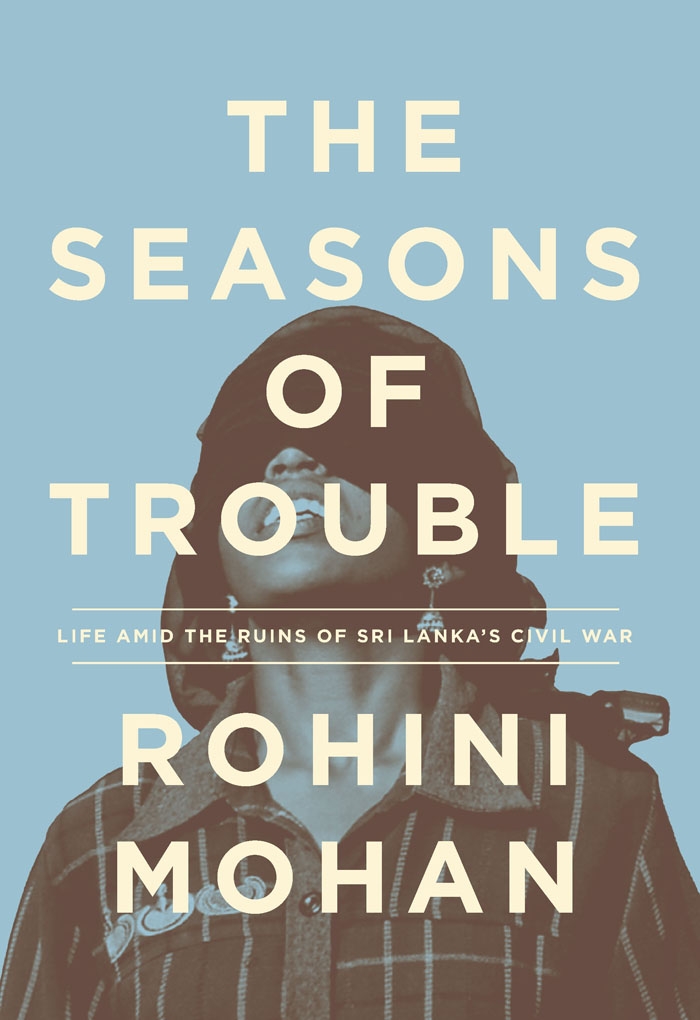About halfway through her 368-page study of the aftermath of Sri Lanka’s devastating civil war, Rohini Mohan writes about the problems of quantifying its effects: ‘In the cacophony of different accounts, attempts to measure the cost of the conflict – the counting of the dead, lost, disappeared, raped or displaced… became fraught with motives and desired ends. Propaganda eclipsed facts, denial extinguished compassion. The war’s end produced two aggressive parallel narratives, which ran fast and strong, never meeting.’ She’s right, of course: five-and-a-half years after the end of the war, the account offered by the victorious Sinhalese government is as distant as it could be from the account offered by the defeated Tamil minority. On the one side is a government narrative of hard-won victory over one of the world’s most notorious terrorist organisations, the Liberation Tigers of Tamil Eelam (commonly known as the LTTE or Tamil Tigers), with minimal civilian casualties. On the other is a counternarrative, held by many Tamils and observers in the West, of a win-at-all-costs strategy that saw Sri Lankan government forces slaughter some 40,000 Tamil civilians and commit numerous war crimes during their final push to victory.
Recent years have seen significant challenges to the Sri Lankan government’s narrative, among them Frances Harrison’s powerful book Still Counting the Dead: Survivors of Sri Lanka’s Hidden War (2012) and Callum Macrae’s influential 2013 documentary No Fire Zone: The Killing Fields of Sri Lanka. However, the government’s response has been anger at perceived external meddling and a denial that is consistent with its refusal to cooperate with a recent United Nations investigation into the possibility of war crimes having occurred. Mohan takes a very different approach to Harrison’s and Macrae’s exposés, instead focusing on the personal stories of two former Tigers, Sarva and Mugil (and to a lesser extent Sarva’s mother, Indra). The Bangalore-based author first met her subjects in 2009, lived in Sri Lanka for ten months and then kept in touch with them through weekly phone calls when she was not there, in order to produce an account of the end of the war and its aftermath in the form of narrative (or creative) nonfiction, rather than documentary. So Mohan confidently restages her characters’ motives, thoughts and conversations even when they might be hazy recollections in the minds of her very real subjects. It is a brave move – one that puts an element of creative writing into the most fraught of arenas. But if the ‘facts’ are so contested by both sides as to form a block to any dialogue, perhaps this is not as unlikely a strategy as it might first seem.
This choice of form gives The Seasons of Trouble a very different tone to more detached accounts. Mugil and her family’s journey to Manik Farm, the government’s controversial civilian displacement camp, shifts focus between the experience of being cluster-bombed by government forces, accounts of family arguments on the road and reflections on the difficulties of finding sanitary napkins while holed up in a bunker (‘every time battle broke out, Mugil felt the world forgot about menstrual cycles’). A second consequence is that Mohan is able to generate a highly nuanced account of the relationship between Tamil civilians and the Tamil Tigers. We first meet Mugil hiding in a mango tree, listening as government soldiers below sexually assault and then kill five young female Tiger recruits. Paradoxically this is the moment at which she loses faith in the Tigers, guessing that, unlike herself, the girls who are raped and killed beneath the tree are most likely forced recruits, with no particular belief in the cause for which they are dying.
Despite being a former Tiger, Mugil’s feelings about them are complex and conflicted throughout the book. She tries to shed her Tiger identity and attempts to blend back into civilian society to escape government retribution – a process the government would then use to justify subsequent actions that Western commentators saw as direct attacks on civilians. Highlighting the difficulties of determining the just and the unjust, Mohan at one point rhetorically asks, ‘How far back would the army go in the twenty-six years of conflict, how broad a brush would they apply? The children conscripted in the final hour… the women pretending to take part to deter sexual predators; the men posing as fighters to get rations… were they so dangerous as to warrant shelling them in a safe zone, along with those who were unarguably civilians?’ The answer, of course, is that the government would apply the broadest brush imaginable and claim justification for doing so through their success in ending the war. The narratives of victor and vanquished will likely never be reconciled.
This article was first published in the Spring 2015 issue of ArtReview Asia.
